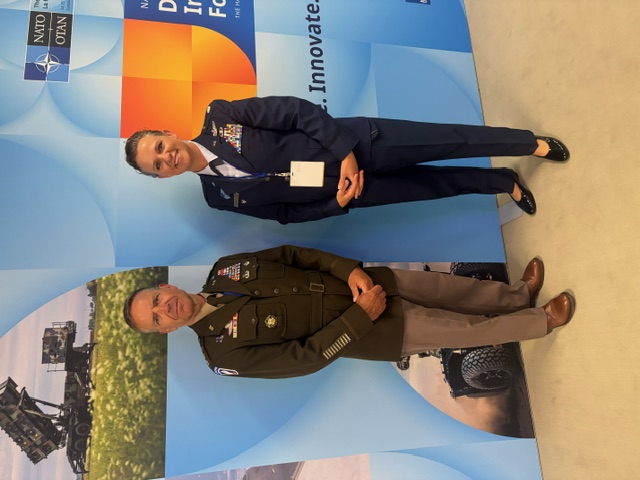The 2025 NATO Summit Dispatch
by Andrew Rohling | 02 Jul 2025
The 2025 NATO Summit Dispatch
A week after the Summit, the crowds have dispersed, the Presidents and Ministers have returned home, and calm has returned. Or has it?
For while NATO may not be an Alliance at war, it is certainly not at peace. Now that the Summit is over, the real work begins.
Heading into The Hague, there was no shortage of skepticism among security professionals, policymakers, and pundits alike. Would all nations commit to such a significant increase in defense spending? Would the U.S. President make a statement that fractures the Alliance? Where would Ukraine and NATO’s partners fall on the agenda?
Yet despite the atmosphere of uncertainty, a week later, the mood within NATO Headquarters, among most Allied delegations, and in much of the media coverage has shifted to one of cautious optimism. The 2025 Summit delivered. And more importantly, it marked a turning point: skepticism has given way to renewed resolve.
What Was Accomplished
The most headline-grabbing outcome was the commitment by NATO leaders to spend 5% of national GDP on defense, a historic pledge. This includes 3.5% directed toward core military capabilities and 1.5% toward defense-related enablers such as infrastructure, supply chains, and cyber resilience. But that was not all.
Leaders reaffirmed the “ironclad commitment” to Article 5 of the Washington Treaty, the foundation of NATO’s collective defense. This declaration, while symbolic, addressed recent doubts and reaffirmed unity in the face of growing threats.
Equally significant was the agreement to expand transatlantic defense industrial cooperation. Building on the earlier Defense Production Action Plan, Allies committed to eliminating trade barriers and aligning economic policies—recalling NATO’s Article 2—to accelerate innovation, interoperability, and battlefield effectiveness.
Although Ukraine and other partners were not present at the main plenary session, they remained deeply engaged through side events, bilateral meetings, and public-facing initiatives, which kept them squarely at the center of the security dialogue.
Looking Ahead: From Spending to Output
If the 2025 Hague Summit was about spending, the 2026 Summit in Turkey will be about output. As the saying goes, “Follow the money!” The next year will test whether Allies can translate their pledges into concrete capabilities. Defense Ministers have already agreed to new Defense Capability Targets—we must now track progress closely and ensure accountability.
From now through the 2026 Summit, we must focus on:
- Reducing production and procurement barriers across the EU and non-EU Allies;
- Enhancing interoperability and enforcing NATO standards;
- Deepening efforts to counter terrorism, hybrid threats, and sabotage, especially from Russia; and
- Providing unwavering support for Ukraine’s long-term security and recovery.
- Conclusion
The NATO Alliance is stronger today because we are acting together. The 2025 Summit in The Hague made that clear. But as we look toward Turkey in 2026, it’s not enough to commit—we must deliver!

About LTG Andrew M. Rohling
Lieutenant General Andrew M. Rohling serves as the Deputy Chair of the NATO Military Committee, shaping allied military policy and strengthening transatlantic defense cooperation since February 2024. Prior to this role, LTG Rohling served as the Deputy Commanding General of U.S. Army Europe and Africa (2022–2024) and as the Commanding General of the U.S. Army Southern European Task Force-Africa (SETAF-AF).
Throughout his career, he has held senior roles across the U.S. Army and NATO, focusing on interoperability, multinational partnerships, and security challenges in Europe, Africa, and the Mediterranean. A strategic leader, LTG Rohling brings decades of operational and alliance-building experience at a critical time for collective defense. He commanded at every level from platoon to brigade, starting with the 7th Infantry Division at Fort Ord and participating in Operation Just Cause. He served in elite units including the 1st Ranger Battalion, 75th Ranger Regiment, and various divisions in Germany and the U.S., leading MIA/POW recovery missions in Hawaii.
After graduating from the Command and General Staff College, he was assigned to the Southern European Task Force in Italy and deployed with the 173rd Airborne Brigade in Iraq and Afghanistan. He commanded the 3rd Battalion, 187th Infantry during Operation Iraqi Freedom and the 173rd Airborne Brigade in Afghanistan. He served as Infantry Branch Chief, graduated from the National War College, and was EO to the Army Chief of Staff. He was also Deputy Commanding General of the 10th Mountain Division, led U.S. efforts in Afghanistan, and served as Deputy Chief of Staff for Operations at NATO’s Allied Rapid Reaction Corps.

